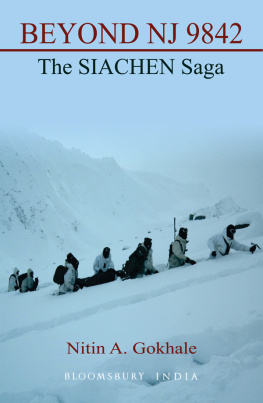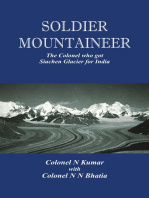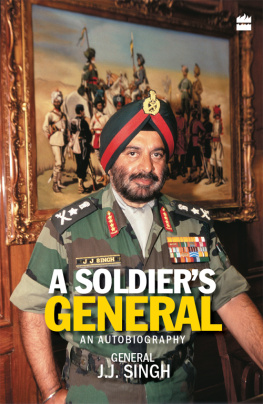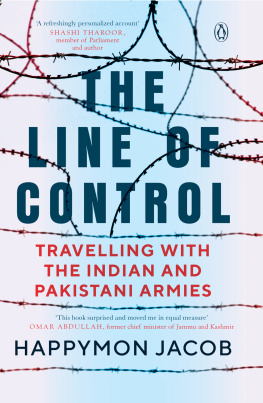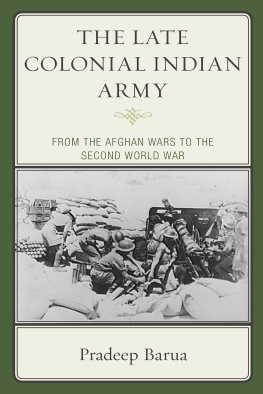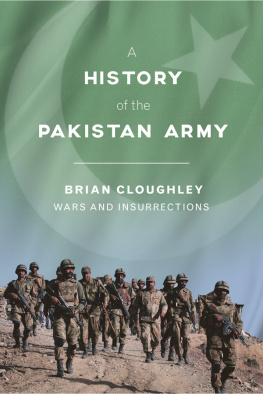Operation Meghdoot was launched by the Indian Army on the barren and icy heights of the Siachen glacier in April 1984 to thwart Pakistan from gaining control of this strategically located glacier. For three decades since then, Indian and Pakistani troops have been locked in an undeclared war on the worlds highest and coldest battlefield.
This is the untold story of blood, guts and glory displayed by the brave Indian soldiers and air warriors on Siachen.

When not reporting news for Indias leading broadcaster NDTV, Nitin A. Gokhale loves to write either for his blog (NewsWarrior) or for various strategic affairs journals. And travel to conflict zones. Author of three books before this one, media trainer and visiting faculty at Indias top defence institutions, he has been a multimedia journalist since 1983.
Soldier of Siachen We Salute you !
There are Soldiers and Soldiers,
But You are a Soldier and More
You Braved the Dangers of Soldiering and Others Too.
The Danger of Burial in a Crevasse or by an Avalanche
Or of Being Crippled by the Pain that Comes
With the Ice Gales of Karakoram, Saltoro and Ladakh Ranges
Be Proud that You Inhaled the Pure Himalayan Air
Because it is the Same Air that in the Plains
Fertilises the Thoughts of Patriots
Be Content that You Lived
On Glacial Heights in the Service of the Nation
For the Supreme Mountain Goddess Inspired and Guided You
Towards the Glory of Your Fate
Anonymous
BEYOND NJ 9842
The SIACHEN Saga
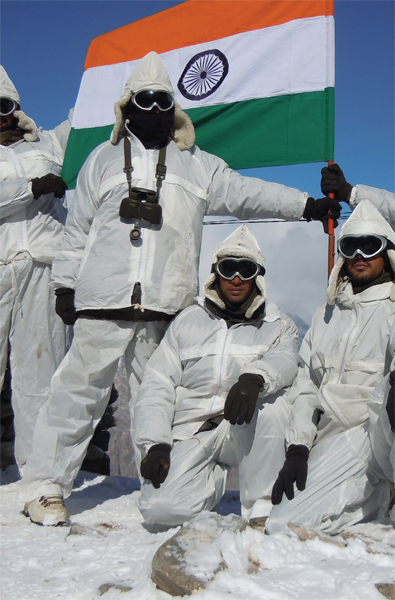
BEYOND NJ 9842
The SIACHEN Saga
Nitin A. Gokhale

The Siachen glacier service ribbon


Nitin A. Gokhale, 2014
First Published, 2014
All rights reserved. No part of this publication may be reproduced or
transmitted in any form or by any means, electronic or mechanical, including
photocopying, recording, or any information storage or retrieval system,
without prior permission in writing from the copyright holder.
No responsibility for loss caused to any individual or organization acting on or
refraining from action as a result of the material in this publication can be
accepted by Bloomsbury India or the author/editor.
BLOOMSBURY PUBLISHING INDIA PVT. LTD.
London New Delhi New York Sydney
ISBN: 978-93-84052-05-8
10 9 8 7 6 5 4 3 2 1
Published by Bloomsbury Publishing India Pvt. Ltd.
Vishrut Building, DDA Complex, Building No. 3
Pocket C-6 & 7, Vasant Kunj
New Delhi 110 070
The publisher believes that the contents of this book do not violate any existing copyright/intellectual property of others in any manner whatsoever. However, in case any source has not been duly attributed, the publisher may be notified in writing for necessary action.
To
The Indian soldier
Who gives so much and
Asks for nothing but dignity and a
little understanding from his countrymen

Acknowledgements
This book would not have been possible without these friends, seniors and organisations who shared their inputs without reservations.
Indian Army
Indian Air Force
Lt. Gen (Retd) ML Chibber
Brig (Retd) VN Channa
Col (Retd) Narinder Bull Kumar
AVM (Retd) Manmohan Bahadur
Lt Gen Sanjay Kulkarni
Lt Gen KH Singh
Maj Gen Shokin Chauhan
Lt Gen (Retd) PC Katoch
Brig Abhijit Bapat
Air Com (Retd) Anil K. Sinha
Group Capt (Retd) WV Rama Rao
Capt Joesph Sam Samuel
Col (Retd) Gopal Karunakaran
Col (Retd) Danvir Singh
Army Medical Corps
Ketki Angre
Mayank Singh
JAK LI Regimental Centre

Foreword

At the strategic level, one requires a long memory and a longer foresight and vision.
Boundaries are a manifestation of national identity. Disputed boundaries are often trip-wires of war. Siachen sits astride two disputed boundaries: with Pakistan and China. Nitin Gokhales book Beyond NJ 9842: The Siachen Saga has motivated me to write about its strategic significance for India and the complexities that come in the way of resolving this dispute.
Siachen lies in the Karakoram Range (beyond the Ladakh Range) in the Northwest of India. The Glacier descends from a height of 23,000 to 12,000 feet. It is 75 km long and covers about 10,000 sq km uninhabited terrain. Along with other glaciers in this area, it is an important source of water for the Indus River which passes through Ladakh and Kargil, and then into Pakistan Occupied Kashmir (POK). The area is claimed by us on the basis of accession of J & K to India in October 1947 and the Karachi Agreement of 1949, which described the ceasefire line beyond NJ 9842 (Saltoro Ridge and beyond) to be running Northwards to the glaciers.
Pakistans cartographic attempt to join NJ 9842 to Karakoram Pass on the India-China boundary (a straight line moving Northeast instead of North) sending mountaineering expeditions and preparations to occupy it with military was foiled when India launched Operation Meghdoot in April 1984. Indian army occupied the Soltoro Ridge to secure the glacier and the territory to its east. This deployment (a) dominates Pakistani positions in the valley west of Soltoro Ridge (b) blocks infiltration possibilities across the Soltoro Ridge passes into Ladakh (c) prevents Pakistani military adventurism in Turtuk and areas to its south. Its Northernmost position at Indira Col overlooks the Shaqsgam Valley (illegally ceded by Pakistan to China) and denies Pakistani access to the Karakoram Pass. Since then the line dividing the military forces of India and Pakistan in the area north of Point NJ 9842 has come to be known as the Actual Ground Position Line (AGPL).
Siachen has always been considered a military setback by the Pakistan Army. That the Indians dominate the area from the Saltoro Ridge and Pakistan troops are nowhere near Siachen Glacier is a fact never mentioned in public. The perceived humiliation manifests itself in many ways. When the Indian Army pre-empted Pakistan plans and occupied the Saltoro Ridge, Benazir Bhutto publicly taunted the Pakistani Army as fit only to fight its own citizens. She did that again when in 1987, Indian troops led by Naib Subedar Bana Singh captured the 21,000-feet Quaid-e-Azam Post in the area and renamed it Bana Post.
In Pakistan, Siachen is a subject that hurts, just like a thorn in its flesh. It is a psychological drain on the Pakistani Army. Pervez Musharraf had once commanded the Special Services Group (SSG) in this area and made several futile attempts to capture Indian posts. One of the motivating factors, and one of the military objectives of the Pakistan Army during the Kargil war in 1999 was to recapture part of the Siachen Glacier and cut off our vital communication links to this area. They failed and suffered heavy casualties.

